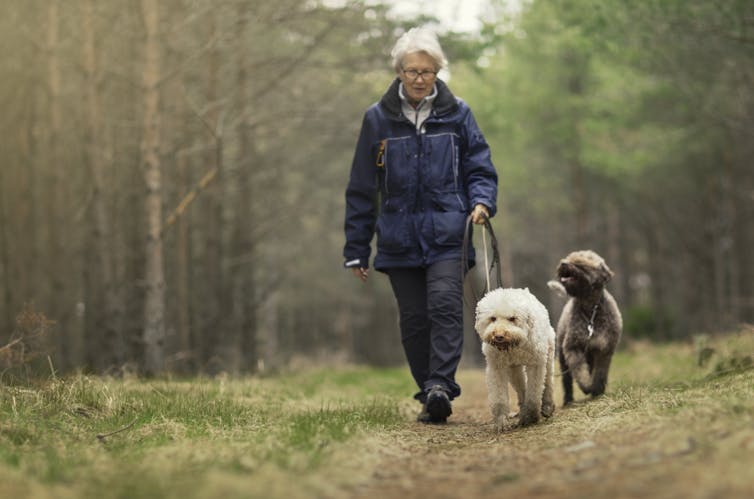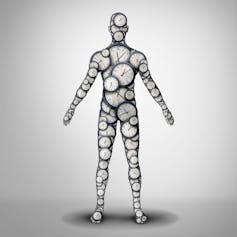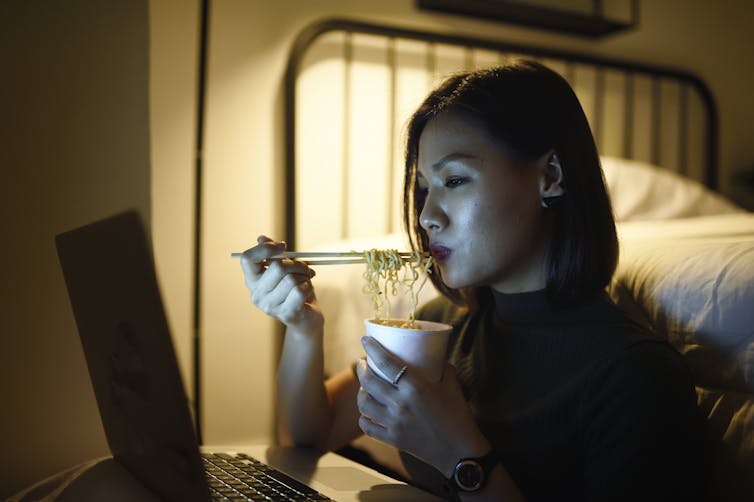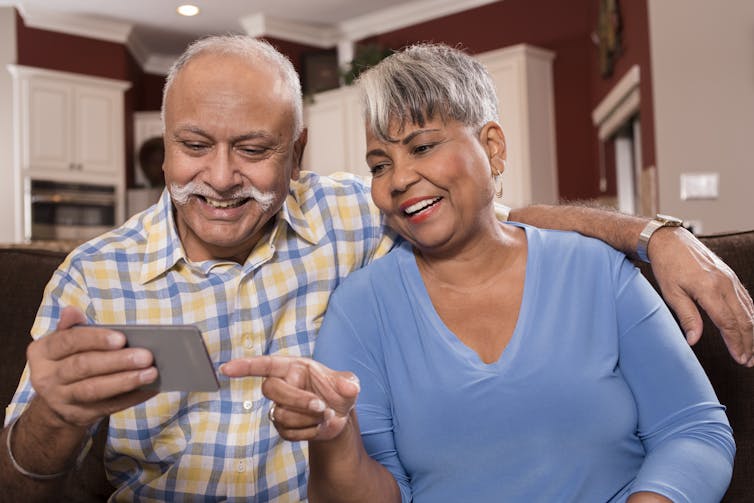Beyond sanitizing and social distancing – a healthy circadian rhythm may keep you sane and increase resilience to fight COVID-19

Social distancing and washing hands have become the frontline in the fight against COVID-19, but there is another powerfully protective resource immediately available to all: your circadian rhythm.

While isolation and hygiene are effective in reducing the chance of infection, they do little to increase our resilience to the virus so that we suffer less and recover faster. In addition, the stress and worry caused by current trends – school and business closures, self-quarantines and mandates to stay at home – don’t help. The strains on our physical and psychological health can leave us even more vulnerable to viruses and other health issues. The answer to boosting your immunity may lie in simple steps you can take to maintain a robust circadian rhythm by developing and following a daily routine.
I head a lab that researches circadian rhythms, the daily cycles of bodily functions that form the foundation of good health. These body clocks, found in nearly every organ of the body and part of the brain, are central and vital to a properly functioning immune system. A synchronized circadian rhythm in the lungs, heart, kidney and brain ensures that the processes in our body go as planned while the immune system can effectively fight and defeat a virus. When the timing systems in the human body are desynchronized, essential organs are compromised, reducing the potency of your immune system. Circadian disruption dampens your immune system and makes a virus harder to defeat.

How do we maintain a robust circadian rhythm?
The answer is as simple as developing a daily routine and sticking to it consistently.
Circadian rhythm in the brain is synchronized to the outside world by light and darkness. Circadian rhythms in the rest of the body are synchronized by when we eat. We can maintain a healthy circadian rhythm by the following simple practices: sleep, eating time, daylight exposure, exercise and stress management.
Sleep is the most profound predictor of a healthy circadian rhythm. When we disturb our sleep, it has effects beyond our brain. Studies have shown that chronically sleep-deprived animals and humans have weaker immune systems, making it easier for even mild infections and viruses to gain entry to the body and cause more damage or even death. Therefore, maintaining a consistent sleep schedule is a powerful strategy to maintain better immunity.
Sleep researchers suggest babies and toddlers may sleep as much as 12 hours each day; children and teenagers should spend nine hours in bed; and adults should try to be in bed for eight hours. Dimming light for two to three hours before bedtime and taking a bath before bed will help you to get a good night’s sleep. A bedtime bath also cleanses our body and may wash off any virus that might have stuck to our skin.

When we eat can nurture or torture our rhythms
When we are not asleep, we tend to snack or eat. Studies show that nearly 50% of adults are likely to eat over a 15-hour window or longer. Shift workers who work early morning, evening or overnight sleep and try to catch up with regular life during off-days.
This erratic scheduling may lead to an even worse eating schedule because of the nature of their work. However, you don’t have to be a shift worker to live like one.
Such large eating windows disrupt the body’s circadian rhythm and weaken organs, including the gut, liver, muscle, heart, kidney and lungs, making it harder to fight an infection. Conversely, animal and human studies are increasingly showing that eating food and beverages within an 8- to 12-hour window reduces disease and infection risk and improves brain and body health. This style of eating is referred to as time-restricted eating or intermittent fasting.
Light up your mood and dim down before sleep
Finally, light and darkness play a crucial role in the brain’s circadian rhythm and brain health. Being outdoors and in daylight for at least 30 minutes each day is a great way to synchronize your brain clock with the outside world. It also reduces depression and anxiety and increases alertness.
In the current climate of hunkering down, staying home and rarely venturing out, not having access to daylight may increase the risk of depression and other mood disorders. Also of note: The UV portion of sunlight is a disinfectant. Just 30 minutes of UV light on clothing may kill bacteria and viruses that may be attached to the exterior of our clothes.
When it becomes dark outside, reducing exposure to bright indoor light for two to three hours before bed will help you sleep.
An ideal routine
We can incorporate these insights into our daily routine to maintain sleep, eating time, light schedule, exercise and strategies to stay positive to profoundly help millions of people who are now stuck at home or have minimal incentive to go out. My lab has developed a research app, myCircadianClock, to guide people how to monitor and optimize their own circadian rhythms.
A simple plan for adults would include the following:
Sleep: Aim to spend eight hours in bed each night to allow at least seven hours of sleep. This allows the brain to rest, detoxify and rejuvenate. Teenagers and children older than the age of 10 should try to be in bed for nine to 12 hours each night.
Diet: Eat within an 8- to 10-hour window of time each day. Note the time you ingest your first calories of the day (beverage or food) and plan on taking your last calories of that day 10 hours later. Make sure that the last calories are consumed two to three hours before bedtime. Such time-restricted eating can be enhanced by being combined with home-cooked healthy food to sustain healthy gut, liver, heart, lung, kidney and immune function. Time-restricted eating may also help shed some extra weight and manage blood pressure, blood glucose and cholesterol.
Light: Spend at least 30 minutes outdoors during daylight hours to reduce depression, increase alertness and improve mood.

Stress management: Social distancing can be social isolation, which can lead to increased stress, depression and difficulty in falling asleep. Spend more time with the people you live with and get in touch with your faraway family and friends over video chat. Keep your mind busy with positive thoughts, read some books you wanted to read for a long time, make new music playlists, play some board games or do puzzles. Avoid too much TV and depressing news.
Exercise: Don’t forget to get some exercise. For those of you who feel you are physically less active, try to get in some steps. Walk around the neighborhood, do some simple strength exercise at home. Turn on some music and dance. If you can, get outside for a walk or hike. Try to do your intense exercise in the afternoon when the muscle clock can give you the most benefit of exercise.
The exact time when each family goes to bed, eats, exercises, explores the outdoors or socializes depends on where they live and what other constraints they may have. But it takes only a week to develop and follow such a plan. By the second week, you may begin to see the benefits of healthy circadian rhythms.
[The Conversation’s newsletter explains what’s going on with the coronavirus pandemic. Subscribe now.]![]()
Satchin Panda, Professor of Regulatory Biology at the Salk Institute for Biological Studies, Adjunct Professor of Cell and Developmental Biology at UCSD, University of California San Diego
This article is republished from The Conversation under a Creative Commons license. Read the original article.






